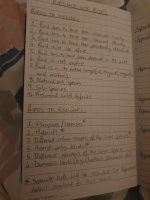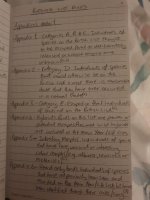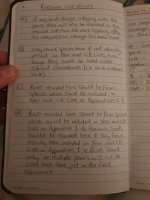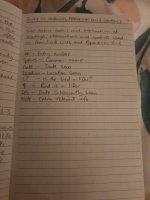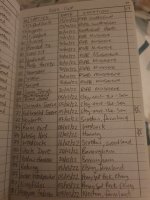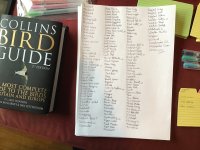
Hi all,
I am redoing my Lifer List and would like your input and advice.
Firstly I like a paper and pen list - no online, excel etc tips please - I know it would be easier, better, more useful etc. But it’s just not for me!
My old list is literally that, although in theory alphabetical, I started it before I knew much so e.g. Little egret is under “L” and Great White under “G”.
This time I am planning to write down all the birds I might see - I have a new ring-bound A4 book Then add next to them where I have seen them, I know I should probably do when, but haven’t so far and it would take far too long to go back through all my day books - but then again I might leave space for that!…………
Then add next to them where I have seen them, I know I should probably do when, but haven’t so far and it would take far too long to go back through all my day books - but then again I might leave space for that!…………
I am using the RSPB Britain’s Birds as my guide - happy for you to argue this choice amongst yourselves lol - but this is my choice! So it starts with “Wildfowl” and although this will probably go next to last for my list, with woodpeckers last, it has raised some interesting questions.
Do I have a separate section in each main section for “very rare”, “introduced” and “escapees“, put them in an “others” category or not bother?
What to do about sub-species? There are 3 listed for Brent geese!
Totally alphabetical within each main section, e.g. pochard would be away from red-crested pochard which would be next to red-breasted merganser, or do I put the Pochards, teals etc. together?
All ideas considered, the more the merrier! Looking at “water birds” now
I am redoing my Lifer List and would like your input and advice.
Firstly I like a paper and pen list - no online, excel etc tips please - I know it would be easier, better, more useful etc. But it’s just not for me!
My old list is literally that, although in theory alphabetical, I started it before I knew much so e.g. Little egret is under “L” and Great White under “G”.
This time I am planning to write down all the birds I might see - I have a new ring-bound A4 book
I am using the RSPB Britain’s Birds as my guide - happy for you to argue this choice amongst yourselves lol - but this is my choice! So it starts with “Wildfowl” and although this will probably go next to last for my list, with woodpeckers last, it has raised some interesting questions.
Do I have a separate section in each main section for “very rare”, “introduced” and “escapees“, put them in an “others” category or not bother?
What to do about sub-species? There are 3 listed for Brent geese!
Totally alphabetical within each main section, e.g. pochard would be away from red-crested pochard which would be next to red-breasted merganser, or do I put the Pochards, teals etc. together?
All ideas considered, the more the merrier! Looking at “water birds” now








